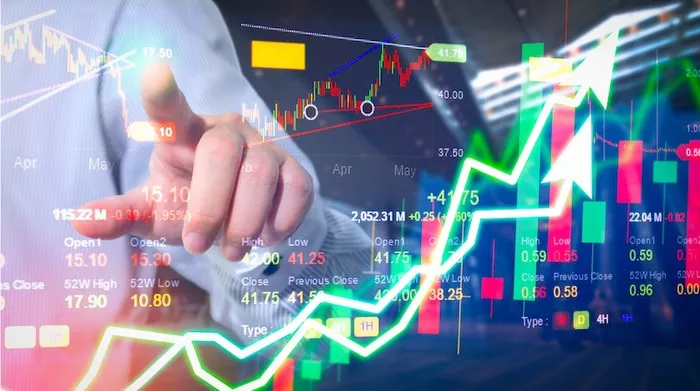Foreign exchange (FX) futures are financial contracts that obligate the buyer to purchase, or the seller to sell, a specific amount of a currency at a predetermined price on a specified future date. Pricing FX futures is a complex process that involves understanding various factors that influence exchange rates and the mechanics of futures contracts. This article provides a detailed guide on how to price FX futures, covering the fundamental principles, calculation methods, and practical considerations.
Understanding FX Futures Contracts
Before diving into pricing, it’s crucial to understand the basic structure of FX futures contracts. These contracts are standardized agreements traded on futures exchanges, such as the Chicago Mercantile Exchange (CME), and they involve the exchange of one currency for another at a future date.
Contract Specifications: Each FX futures contract specifies the amount of the currency to be traded, the delivery date, and the currency pair involved (e.g., EUR/USD, GBP/JPY).
Settlement: FX futures can be settled either through physical delivery or cash settlement. In cash settlement, the difference between the contract price and the spot price at expiration is paid in cash.
Leverage: Futures contracts are leveraged instruments, meaning traders can control a large position with a relatively small margin.
Factors Influencing FX Futures Pricing
The price of an FX futures contract is influenced by several key factors, including:
Spot Exchange Rate: The current market price at which one currency can be exchanged for another. The spot rate is a primary determinant of the futures price.
Interest Rate Differentials: The difference between the interest rates of the two currencies involved in the futures contract. Interest rates affect the cost of holding a currency position and thus impact the futures price.
Time to Maturity: The length of time until the contract’s expiration date. As the contract approaches maturity, the futures price converges towards the spot price.
Currency Volatility: The volatility of the currency pair affects the pricing of futures, as higher volatility increases the risk and potential return.
Market Expectations: Traders’ expectations about future economic conditions, interest rates, and geopolitical events can influence the pricing of FX futures.
Theoretical Pricing Models for FX Futures
Several theoretical models are used to price FX futures, each incorporating different elements of the factors mentioned above. The most widely used model is based on the concept of the cost-of-carry model, which is derived from the no-arbitrage principle.
1. The Cost-of-Carry Model
The cost-of-carry model is grounded in the idea that the price of an FX futures contract should reflect the cost of carrying the currency position until the contract’s expiration.
2. The Forward Price Formula
The forward price formula is closely related to the cost-of-carry model and is used to calculate the price of an FX forward contract, which is conceptually similar to an FX futures contract.
3. The Black-Scholes Model
The Black-Scholes model, originally developed for pricing stock options, can also be adapted for pricing FX options, which are related to FX futures.
See Also: What Is the Open Interest on Dollar Futures?
Practical Considerations in Pricing FX Futures
In practice, pricing FX futures involves several considerations beyond the theoretical models. These include:
1. Bid-Ask Spreads
The bid-ask spread is the difference between the buying (bid) and selling (ask) prices of the futures contract. A wider spread can increase the cost of entering and exiting a position, affecting the effective price of the futures contract.
2. Liquidity
The liquidity of the FX futures market can impact pricing. Highly liquid markets tend to have narrower bid-ask spreads and more accurate pricing. Illiquid markets may exhibit more price volatility and wider spreads.
3. Market Sentiment
Market sentiment and expectations can drive deviations from theoretical prices. For instance, news events or economic data releases can lead to sudden changes in market expectations, influencing the futures price.
4. Currency Pair Dynamics
Different currency pairs may exhibit unique pricing behaviors based on their economic and geopolitical characteristics. For example, emerging market currencies may have different risk premiums compared to major currencies like the USD or EUR.
5. Economic Indicators
Economic indicators such as inflation rates, employment data, and trade balances can impact currency values and, consequently, FX futures pricing. Traders should stay informed about relevant economic developments to make accurate pricing decisions.
Conclusion
Pricing FX futures involves a thorough understanding of the underlying factors that influence currency values and the mechanics of futures contracts. By applying theoretical models such as the cost-of-carry model and the forward price formula, traders can estimate the fair value of FX futures contracts. Practical considerations, including bid-ask spreads, liquidity, and market sentiment, also play a crucial role in determining the effective price.
Successful pricing of FX futures requires a combination of theoretical knowledge and practical experience. Traders must stay informed about economic indicators, market developments, and currency dynamics to make informed decisions and manage risks effectively. As with any financial instrument, a well-rounded approach to pricing FX futures will contribute to more accurate and strategic trading decisions.


